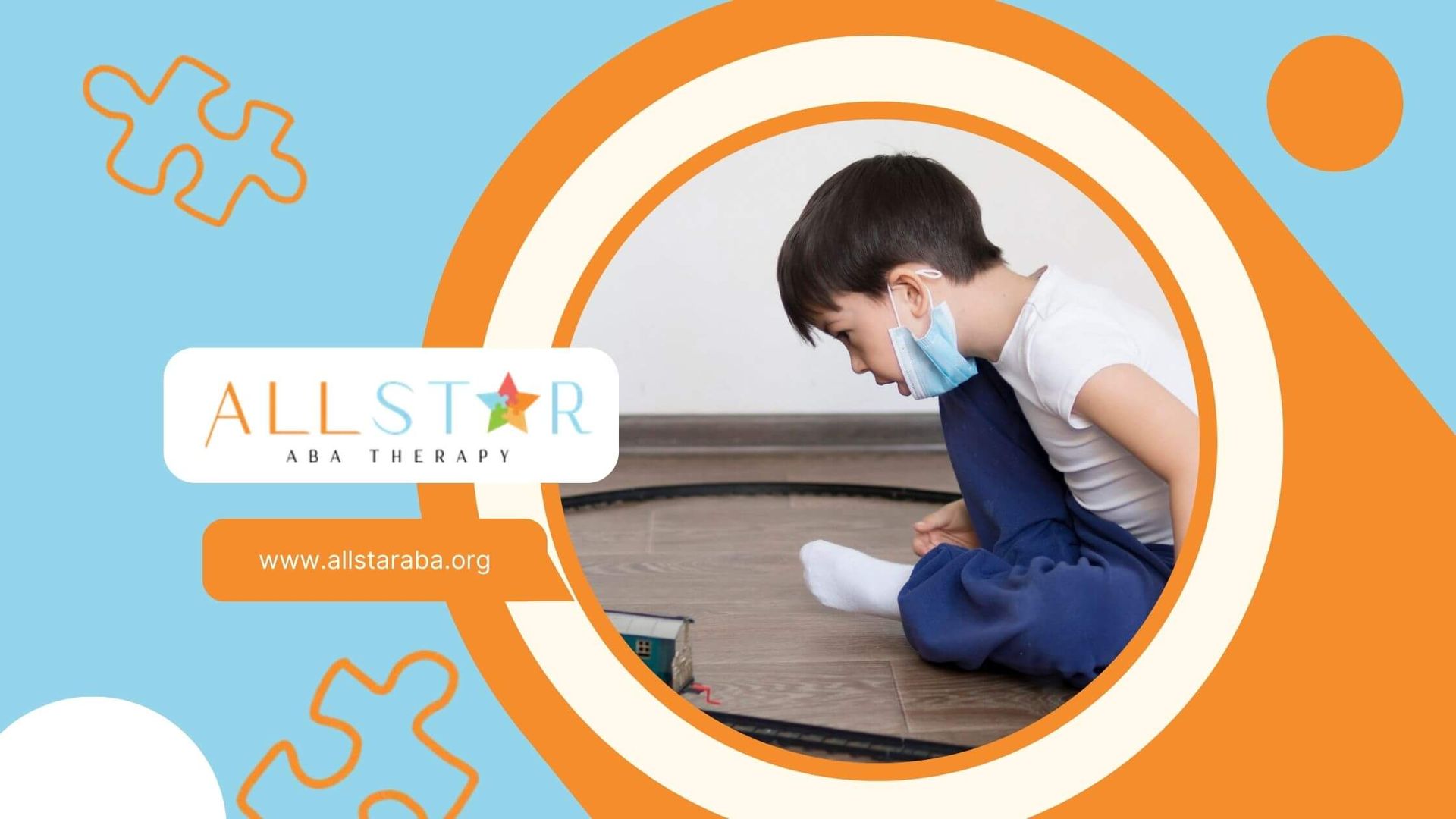New Paragraph
Breaking Barriers: The Impact of ABA Therapy for Autism
Understanding ABA Therapy
Applied Behavior Analysis (ABA) is a well-established and highly effective intervention method for individuals with Autism Spectrum Disorder (ASD) and related conditions. By understanding the basics and goals of ABA therapy, caregivers and professionals can better utilize its techniques to support those with autism.
Basics of ABA Therapy
ABA therapy for autism is grounded on the science of learning and behavior. This therapy helps to understand how behavior works, how it is affected by the environment, and how learning takes place. ABA therapy applies our understanding of how behavior works to real situations. The goal is to increase behaviors that are helpful and decrease behaviors that are harmful or affect learning (applied behavior analysis for autism).
The therapy involves many techniques for understanding and changing behavior. ABA is a flexible treatment:
- Can be adapted to meet the needs of each unique person
- Provided in many different locations – at home, at school, and in the community
- Teaches skills that are useful in everyday life
- Can involve one-to-one teaching or group instruction
Goals of ABA Therapy
The primary goals of ABA therapy are to foster basic skills such as looking, listening, and imitating, as well as complex skills like reading, conversing, and understanding another person's perspective. The specific goals of ABA therapy for autism may include:
- Social Skills: Developing and enhancing the individual's ability to interact with others, including family, friends, and peers.
- Communication: Increasing and improving the individual's verbal and non-verbal communication abilities.
- Self-Care: Encouraging skills that allow the individual to become more independent.
- Academic Skills: Assisting with learning in school environments and beyond.
- Motor Skills: Enhancing both fine and gross motor abilities.
- Play and Leisure Skills: Building the ability to engage in play with peers and independently.
By working closely with each individual, therapists use ABA techniques to meet these goals, ensuring that the interventions are tailored to the person’s needs, skills, interests, preferences, and family situations. For more about specific techniques, visit ABA therapy techniques for autism.
ABA therapy aims not only to improve skills but also to help individuals with ASD engage more fully with their family and community and lead more productive lives. It is a comprehensive approach that, when implemented correctly, can have profound effects on an individual's quality of life (autism intervention with ABA therapy). For more details on programs that offer ABA therapy, check out ABA therapy programs for autism.
Benefits of ABA Therapy
Applied Behavior Analysis (ABA) therapy offers a multitude of benefits for individuals with Autism Spectrum Disorder (ASD). These benefits extend to enhancing social interactions and communication skills, which are often areas of challenge for individuals on the spectrum.
Improving Social Skills
One of the primary benefits of
ABA therapy for autism is the improvement of social skills. ABA therapy techniques focus on teaching individuals how to interact with others and navigate various social situations. This includes understanding social cues, taking turns in conversation, and developing friendships. Through consistent ABA sessions, individuals with autism can learn to recognize and respond to social stimuli, which is essential for building and maintaining relationships.
| Social Skills Targets | ABA Techniques Used |
|---|---|
| Eye Contact | Prompting and Reinforcement |
| Sharing | Role Play and Modeling |
| Turn-taking | Social Stories and Scripts |
ABA therapy techniques for autism such as role-playing, modeling, and the use of social stories can be instrumental in teaching these skills. The therapy provides a structured environment where social interactions are broken down into manageable components, allowing for gradual and sustained improvement in these areas.
Enhancing Communication
Communication is another critical area that ABA therapy seeks to improve. For many individuals with autism, verbal and non-verbal communication can be challenging. ABA therapy works by reinforcing language skills and providing a framework for individuals to express their needs and desires effectively.
Therapists may use a variety of techniques to enhance communication, such as Picture Exchange Communication Systems (PECS), sign language, or verbal prompting. These methods help individuals find their voice, whether through spoken words, gestures, or alternative communication systems.
| Communication Goals | ABA Strategies Employed |
|---|---|
| Requesting Needs | PECS and Sign Language |
| Expressing Emotions | Emotion Cards and Role Play |
| Verbal Skills | Echoic Training and Scripting |
By systematically applying these strategies, individuals with autism can experience significant improvements in their ability to communicate, which, in turn, can greatly enhance their overall quality of life.
The benefits of ABA therapy in improving social skills and enhancing communication are just two aspects of the comprehensive support it provides. Parents and caregivers can find out more about how ABA therapy can aid in autism intervention with ABA therapy and explore various ABA therapy programs for autism to determine the best approach for their loved ones.
Implementing ABA Therapy
Applied Behavior Analysis (ABA) is a well-established approach for assisting individuals with Autism Spectrum Disorder (ASD) in developing essential life skills. Implementation of ABA therapy involves a range of techniques and structured sessions tailored to meet the unique needs of each individual.
ABA Techniques
ABA therapy encompasses various techniques, each designed to target and improve specific behaviors. These strategies are evidence-based and are used to encourage positive behaviors while decreasing unwanted behaviors. Some common ABA techniques include:
- Discrete Trial Training (DTT): A structured method of teaching that breaks down skills into small, "discrete" components, allowing individuals to master them step by step.
- Pivotal Response Training (PRT):
Focuses on pivotal areas of a child's development, such as motivation and response to multiple cues, to produce broad improvements in communication, behavior, and social skills.
- Natural Environment Training (NET): Emphasizes teaching skills within the natural environment to encourage the transfer of learned behaviors to daily situations.
For more in-depth information on these and other ABA methods, visit ABA therapy techniques for autism.
Structuring ABA Sessions
The structure of ABA sessions is critical for effective intervention. Typically, ABA therapy involves the following stages:
- Assessment Phase: An initial assessment is conducted to identify the individual's strengths, challenges, and learning style.
- Goal-Setting: Based on the assessment, specific and measurable goals are set for the individual.
- Treatment Plan: A detailed plan that outlines the ABA techniques to be used, the frequency of sessions, and the roles of therapists and caregivers.
- Implementation: ABA therapists carry out the treatment plan, working with the individual on a one-to-one basis or in group settings.
- Monitoring: Progress is continuously monitored, and strategies are adjusted as needed to ensure the individual is progressing toward their goals.
- Parent and Caregiver Training: Training is provided to empower parents and caregivers to support the individual's development and carry over skills to home and community settings.
A typical ABA therapy session may look like the following:
| Stage of Session | Activity | Duration |
|---|---|---|
| Introduction | Greeting and setting the agenda for the session | 5 minutes |
| Skill Acquisition | Implementing teaching plans using ABA techniques | 30-45 minutes |
| Breaks | Short breaks to maintain engagement | 2-5 minutes (as needed) |
| Review | Reviewing what was learned and providing feedback | 5-10 minutes |
| Conclusion | Discussing progress and next steps with caregivers | 5 minutes |
To learn more about the process of ABA therapy and how it can be applied to support individuals with autism, check out autism intervention with ABA therapy.
The design and implementation of ABA therapy sessions are essential components in the intervention process. By carefully structuring sessions and employing proven ABA techniques, practitioners can create a supportive learning environment that promotes growth and development for individuals with autism. Parents looking for comprehensive ABA programs can explore ABA therapy programs for autism to find services that align with their child's needs.
ABA Therapy Process
The ABA therapy process for autism is a structured approach to intervention that is tailored to meet the unique needs of each individual. It involves initial assessments followed by the development of individualized treatment plans.
Initial Assessment
Before beginning applied behavior analysis (ABA) therapy, an initial assessment is crucial to understand the individual's current level of functioning and to identify specific areas of need. This comprehensive evaluation typically includes interviews with parents or caregivers, observations of the individual in various settings, and standardized tests.
The assessment aims to gather a detailed understanding of the individual's behavior, communication abilities, social skills, and other developmental aspects. It's also used to establish a baseline against which future progress can be measured. Data collected from the initial assessment will guide the formulation of the ABA treatment plan.
For more insights into the assessment phase, please see our detailed discussion on applied behavior analysis for autism.
Individualized Treatment Plans
Following the assessment, the ABA therapy team, often including Board Certified Behavior Analysts (BCBAs), develops an individualized treatment plan. This plan outlines specific goals and objectives tailored to the individual's needs and is designed to promote meaningful improvements in behavior and skill acquisition.
The treatment plan typically includes:
- Behavioral goals: Clear, measurable goals related to reducing challenging behaviors and increasing desirable behaviors.
- Skill-building objectives: Targets for developing social, communication, academic, and life skills.
- Intervention strategies: Specific
ABA therapy techniques for autism that will be used to address the goals and objectives.
- Data collection methods: Procedures for tracking progress and outcomes of the intervention.
- Parent and caregiver involvement: Ways in which family members will participate in and reinforce the therapy outside of structured sessions.
| Component | Description |
|---|---|
| Behavioral Goals | Reduce outbursts, increase compliance |
| Skill-building Objectives | Improve conversation skills, learn daily routines |
| Intervention Strategies | Positive reinforcement, task analysis |
| Data Collection Methods | Frequency counts, duration recording |
| Parent Involvement | Training sessions, home practice |
The individualized treatment plan is a living document that evolves over time as the individual progresses and achieves their goals. Regular monitoring and evaluation of the individual's progress are essential to ensure the therapy remains effective and aligned with their evolving needs. Updates to the plan are made based on data-driven decisions to optimize outcomes.
For an in-depth look at how treatment plans are structured and implemented, explore our guide to autism intervention with ABA therapy.
The development of an individualized treatment plan is a collaborative process that requires the input and cooperation of the individual with autism, their family members, and the ABA therapy team. By crafting a personalized approach to intervention, ABA therapy for autism aims to make a significant and positive impact on the lives of individuals with autism, empowering them to achieve their full potential. For more information on different ABA therapy programs available, visit our page on ABA therapy programs for autism.
Finding ABA Therapy Services
Locating the right ABA therapy services is a critical step for families and individuals affected by autism. This section provides guidance on researching ABA providers and important considerations when choosing a provider to ensure the most effective applied behavior analysis for autism.
Researching ABA Providers
When beginning your search for ABA therapy services, it's essential to gather comprehensive information to make an informed decision. Start by compiling a list of local ABA providers in Baltimore, Maryland. You can use online directories, recommendations from healthcare professionals, or support groups for families with autism.
Next, review the services each provider offers. Look for information on their
ABA therapy techniques for autism and the structure of their
ABA therapy programs for autism. It's also beneficial to read reviews or testimonials from other families who have used their services. Additionally, check if the providers have experience with the specific age group of your child or individual requiring therapy.
| Steps for Researching Providers | Details |
|---|---|
| Compile a List | Local providers in Baltimore, Maryland |
| Assess Services | Techniques and programs offered |
| Read Testimonials | Reviews from other families |
| Check Expertise | Experience with specific age groups |
Considerations for Choosing A Provider
Selecting the right ABA provider is a decision that should be tailored to the individual's specific needs. Here are some key factors to consider:
- Credentials and Experience: Verify the qualifications and credentials of the ABA therapists. Ensure they have the necessary certifications and experience, particularly in working with individuals with autism.
- Individualized Treatment Plans: Ensure that the provider offers
autism intervention with ABA therapy that includes customized treatment plans tailored to the individual's needs.
- Approach to Therapy: Consider the provider's approach to therapy. It's important that they use evidence-based practices and regularly monitor progress.
- Insurance and Costs: Investigate whether the provider accepts your insurance and understand the costs involved. ABA therapy can be a significant investment, and financial planning is crucial.
- Location and Accessibility: The proximity of the provider to your home or school may affect your decision. Consider the convenience of travel and the accessibility of the provider's facilities.
- Communication and Support: Assess the provider's communication style and the level of support they offer to families. It's beneficial to choose a provider who is responsive and fosters a collaborative relationship with families.
| Factor | Description |
|---|---|
| Credentials | Therapist certifications and experience |
| Treatment Plans | Customized plans for individual needs |
| Therapy Approach | Evidence-based practices and progress monitoring |
| Insurance and Costs | Coverage and financial implications |
| Location | Proximity to home or school |
| Communication | Provider's responsiveness and family support |
By taking into account these considerations, families and individuals can find an ABA therapy provider that best meets their needs and facilitates positive outcomes for those with autism.
Need Support?
We're Here to Help!
Our experienced team is ready to assist you. Reach out today to discuss how we can support your child's development and well-being.
Get started with expert ABA therapy today.








